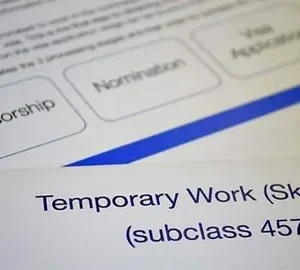If you’ve ever dreamed of immersing yourself in Japanese culture, building global skills, and making a tangible impact while earning a living, the JET Programme (Japan Exchange and Teaching Programme) might just be your calling. Especially for students affiliated with the prestigious University of Tokyo, the pathway to teaching English in Japan through the JET Programme via university exchange opens unique doors. In this post, we’ll explore everything you need to know about this rewarding opportunity—from application processes to daily life, salary, and the immense personal and professional growth it fosters.
What is the JET Programme?
The JET Programme is a government-sponsored initiative that brings college graduates from around the world to Japan to teach English and promote cultural exchange. Launched in 1987, it is one of the largest and most respected teaching exchange programs in the world.
Participants, known as JETs, typically serve as Assistant Language Teachers (ALTs) in public schools, helping Japanese students improve their conversational English while also sharing their home cultures.
Why Teach English in Japan on the JET Programme via University of Tokyo?
The University of Tokyo, or Todai, frequently collaborates with the JET Programme, offering its students and graduates streamlined access to application support and exclusive placement options. This synergy combines the university’s academic rigor with the JET Programme’s cross-cultural mission.
Here’s why this route stands out:
- Institutional Support: Todai’s International Exchange Group assists in connecting students with JET recruiters and provides resources to strengthen applications.
- High Placement Success: Affiliation with Japan’s most elite university often boosts a candidate’s chances.
- Networking Opportunities: Students have access to both Todai alumni in Japan’s public education system and the global JET alumni network.
How to Apply for the JET Programme from the University of Tokyo
The JET application process involves several steps and starts almost a year before departure. The University of Tokyo’s exchange support office simplifies this with workshops and consultations.
Step-by-step Application Timeline:
- Pre-Application (May–August)
- Research the role of ALTs
- Consult with the University of Tokyo International Exchange Group
- Application Submission (October–November)
- Apply through the JET Programme portal
- Submit all required documents, including SoP, references, and health forms
- Interview (January–February)
- Usually held at the Japanese Embassy or consulate in your home country
- Placement & Departure (April–July)
- Final placements and departure orientations begin in summer
Key Benefits of the JET Programme
Beyond the cultural immersion and travel, the JET Programme offers tangible benefits:
| Benefit | Details |
|---|---|
| Salary | Approx. ¥3.36 million/year (~USD 24,000) for first-year ALTs. Increases yearly. |
| Housing | Often subsidized or arranged by host institutions. |
| Medical Insurance | National coverage included. |
| Paid Vacation | Typically 10-20 days/year plus public holidays. |
| Language & Cultural Training | Pre-departure and in-country training sessions. |
Life as a JET ALT in Japan
Once placed, most JET participants find themselves in local public schools across Japan—ranging from bustling cities like Osaka to rural towns in Hokkaido. A typical day might include assisting in English lessons, preparing classroom materials, and participating in community activities.
Daily Routine Highlights:
- Morning Briefing: Coordination with Japanese Teachers of English (JTEs)
- Classroom Time: Team-teaching lessons with a focus on speaking and listening
- Lunch with Students: A cultural staple that fosters connection
- Afternoon Clubs: Participate in sports or cultural clubs
Read a JET participant’s blog for a vivid day-in-the-life account.
Challenges to Consider
While the JET Programme is rewarding, it’s not without its hurdles:
- Language Barrier: Minimal Japanese fluency is required, but daily life can be tough without basic skills
- Isolation: Rural placements may lead to feelings of loneliness
- Cultural Adjustment: Japanese work culture and communication styles can be rigid
Todai students can mitigate these challenges with preparation. The university offers pre-departure workshops covering cross-cultural communication, basic Japanese, and mental health resources.
How the JET Programme Boosts Your Career
Having “JET Programme ALT” on your resume is a powerful asset. Many former JETs go on to thrive in international business, education, diplomacy, and academia.
Notable pathways include:
- Graduate School: Returnees often pursue degrees in international studies or education
- Global Corporations: JET alumni are valued by firms with Asia-Pacific markets
- Government & NGOs: Many use the experience as a springboard into public service
The JET Alumni Association provides networking, job leads, and mentorship for returnees.
FAQs About the JET Programme via University of Tokyo
Do I need to speak Japanese fluently?
No. While Japanese ability helps, the program is designed for English speakers.
Is this limited to University of Tokyo students?
No, but Todai students get enhanced support and resources.
What if I’m not an English or education major?
JET welcomes applicants from all academic backgrounds.
Can I renew my contract?
Yes. JET contracts are for one year, renewable up to five years.
Final Thoughts: A Gateway to Japan
Teaching English in Japan on the JET Programme via the University of Tokyo exchange is more than just a job; it’s a bridge to global citizenship, cross-cultural competence, and lasting friendships. The blend of structure and adventure it offers is unlike any other post-graduation opportunity.
So, if you’re a Todai student (or even just dreaming of living in Japan), now’s the time to take action. Visit the JET Programme site and the University of Tokyo Exchange Hub to start your journey.
Adventure, impact, and a paycheck await—all wrapped in cherry blossoms and sushi rolls.





